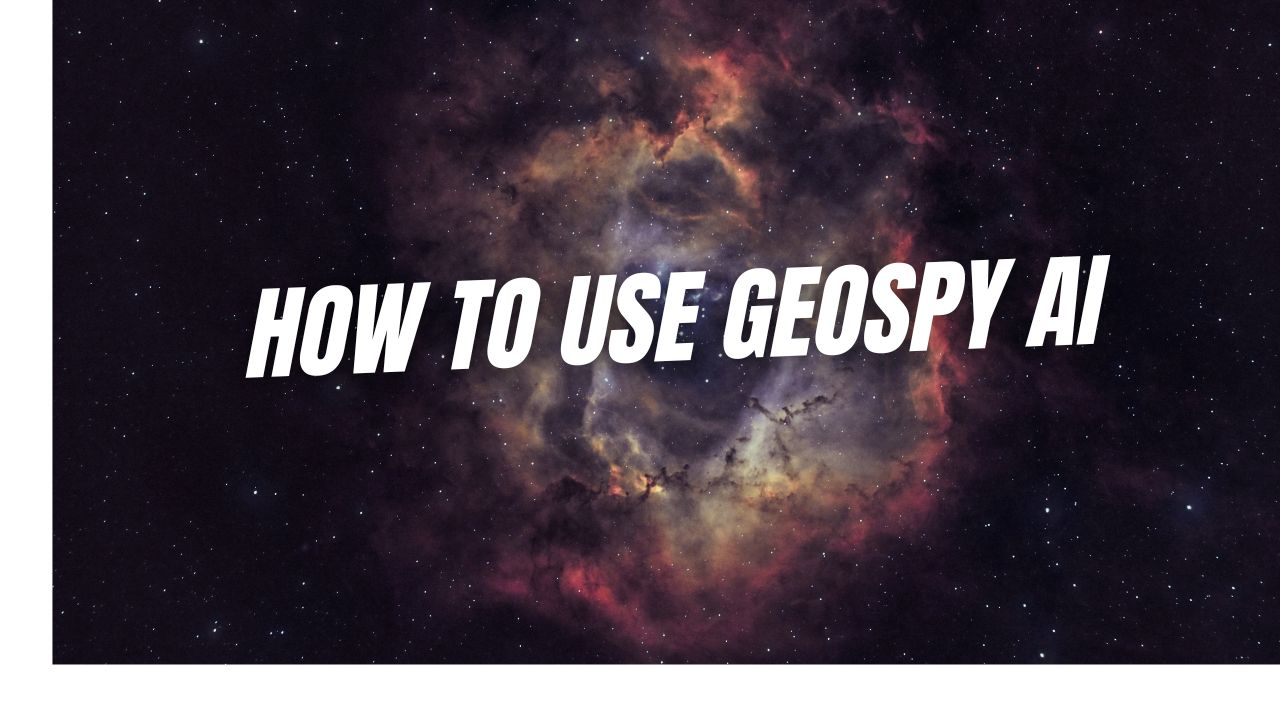How To Use Geospy AI:GeoSpy AI is an innovative artificial intelligence software for geolocating photos. This cutting-edge program can precisely determine particular coordinates and provide detailed location information for photographs shared by users. If you’re eager to learn more about this extraordinary technology, you’ve come to the perfect place.
In this post, I’ll walk you through the steps to easily use GeoSpy AI. Let us dig in and get started!
What is Geospy AI?
GeoSpy AI is an innovative image geolocation technology that uses artificial intelligence to scan photos and deliver estimated locations.
It’s crucial to remember that GeoSpy AI’s results are estimates, and their accuracy may vary based on factors including image quality, the existence of identifiable landmarks, and the algorithm’s limits.
Features of GeoSpy AI
GeoSpy AI goes beyond simple location detection, providing a complete collection of capabilities to satisfy your curiosity and reveal hidden insights in your photographs. Here’s an overview of what GeoSpy AI has to offer:
- Image Upload: Easily upload any image, whether it’s a casual social media snapshot or a cherished vacation photo, to cater to your interests and inquiries.
- AI-powered Analysis: Utilizing advanced artificial intelligence, GeoSpy AI meticulously analyzes images, identifying landmarks, landscapes, and subtle details to provide valuable insights.
- Location Estimation: Obtain precise location estimations, spanning from country and city to specific coordinates on a map, all based on the content of your pictures.
- Continuous Learning: GeoSpy AI continuously improves its accuracy in location estimation as it encounters more images, ensuring increasingly reliable results over time.
- Location Comparison: Effortlessly compare potential locations side by side, facilitating a comprehensive analysis of different possibilities for your photo’s origin.
- Free and Paid Plans: Start with GeoSpy AI for free, or access advanced features through a paid subscription tailored to your needs.
- Multi-Image Analysis: Analyze multiple images from various angles or timeframes to gain a comprehensive understanding and uncover hidden insights.
- Privacy-Focused: GeoSpy AI prioritizes the confidentiality of your photos and searches, ensuring your privacy is protected at all times.
- API for Developers: Developers can integrate GeoSpy AI into their applications using its API, providing flexibility and seamless capabilities.
With these features, GeoSpy AI empowers users to explore their photos deeply, uncovering intriguing details and unlocking hidden information effortlessly and accurately.
How to Use GeoSpy AI
To make the most of GeoSpy AI, you can access it either through the Web App site or integrate it with the GeoSpy API.
Step 1: Visit the GeoSpy Website
Start by opening your preferred web browser and heading to the GeoSpy web app site.
Step 2: Upload Your Image
Look for the designated section on the website where you can upload the image you want to analyze.
Step 3: AI Analysis
Once the image is uploaded, GeoSpy AI’s algorithms will get to work in the background by:
- Analyzing the visual cues within the image.
- Comparing them with its vast database of images and geographic data.
Step 4: Results
- Estimated Location: GeoSpy AI will provide a description alongside approximate coordinates indicating the estimated location.
- Confidence Score: The tool will also assign a confidence score to indicate its level of confidence in the estimated location. A higher score signifies a more precise result.
- Map: Users will be presented with a visual map representation of the estimated location, allowing for zooming in and out for detailed exploration.
- “View on Google Maps” Button: This feature offers users the option to seamlessly navigate to the estimated location on Google Maps for further investigation.
How GeoSpy AI Works
GeoSpy AI functions as an advanced visual processor paired with a vast geographical knowledge base. Here’s how it works:
Image Analysis: GeoSpy AI meticulously examines the uploaded image, carefully searching for visual cues that indicate the location. This includes:
- Landmarks: Identifying recognizable structures like landmarks, bridges, or natural features.
- Vegetation: Recognizing characteristic types of trees or plants native to specific regions.
- Infrastructure: Noting details such as road signs, unique architectural styles, or the arrangement of power lines.
- Sky and Shadows: Analyzing cloud formations and sun positioning to determine both the time and general direction.
Database Comparison: After analyzing the image, GeoSpy AI cross-references these visual cues with its extensive repository of geotagged images and geographic data. This process is akin to solving a complex puzzle to find the most suitable match.
Location Estimation: GeoSpy AI then provides an educated estimation of the location, typically including:
- Coordinates: Approximate latitude and longitude coordinates.
- Description: A broad depiction of the surrounding area.
- Map: A visual representation of the potential location for further examination.
Conclusion
In conclusion, GeoSpy AI represents a notable leap forward in geospatial analysis, utilizing artificial intelligence to bolster capabilities. By streamlining complex analytical procedures, providing actionable insights, and fostering collaboration, GeoSpy AI has the potential to transform numerous sectors, including urban planning, environmental management, defense, and intelligence.
Adopting this groundbreaking technology offers the chance to uncover unprecedented possibilities and propel geospatial analysis into a realm of innovation and effectiveness.
